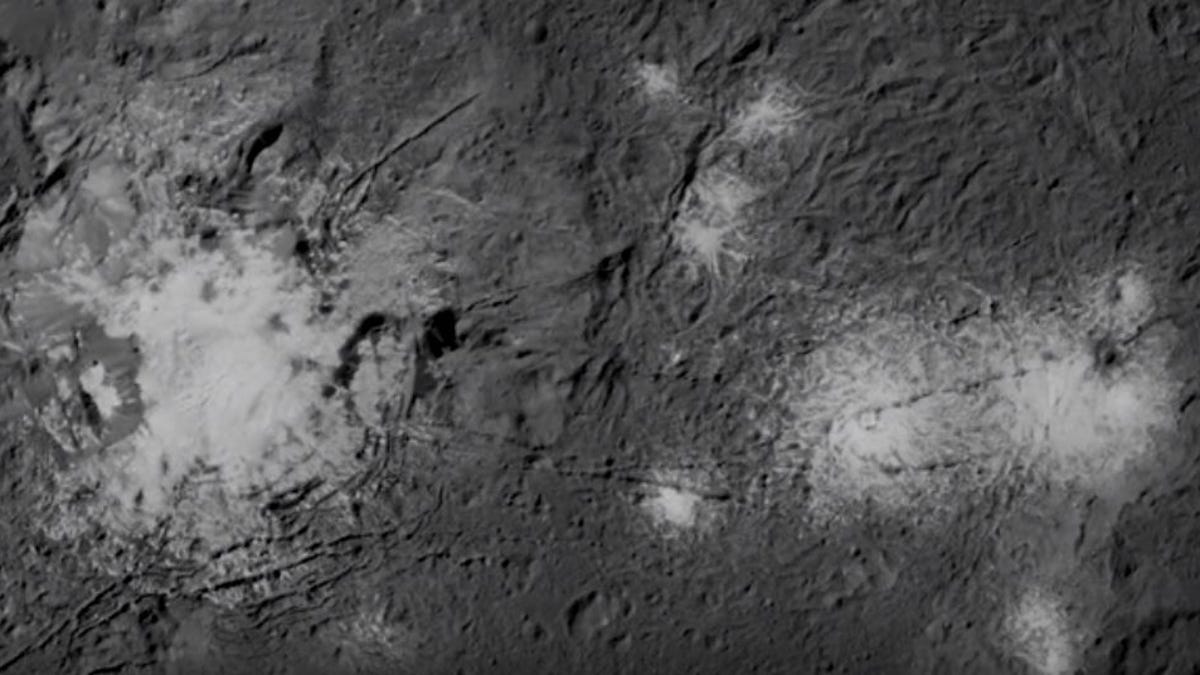Here's the closest look yet at Ceres' bright spots and other mysteries
NASA has released new images from its Dawn spacecraft of the wildly strange dwarf planet, which seems to be hiding more secrets.
NASA's Dawn spacecraft has been circling Ceres, the largest object in the asteroid belt beyond Mars, for about a year now. The mission team on Tuesday released some of the closest views we're likely to see of the mysterious world, which harbors a huge, unexplained mountain, plenty of crazy bright spots and hints of more secrets below its surface.
Strange bright spots in Occator Crater have prompted much speculation about their origin. The most likely explanation for the light coming off the small world isn't an alien base, though. It's still likely the sun is bouncing off some highly reflective salt deposits. But there's more in the crater than just alien salt flats.
"Before Dawn began its intensive observations of Ceres last year, Occator Crater looked to be one large bright area. Now, with the latest close views, we can see complex features that provide new mysteries to investigate," Ralf Jaumann, planetary scientist and Dawn co-investigator at the German Aerospace Center (DLR) in Berlin, said in a NASA release. "The intricate geometry of the crater interior suggests geologic activity in the recent past, but we will need to complete detailed geologic mapping of the crater in order to test hypotheses for its formation."
Scientists have long suspected that there's something interesting beneath the surface of Ceres, like some amount of water ice, or a slurry of chilly wet mud.
New false color images of the smaller Haulani Crater confirm that Ceres is more than just a big, dead, dry space rock. They show that the material that was kicked up by whatever impact formed the crater is different than the general surface composition of Ceres.
Variations in brightness, a false color image and variations in temperature of Haulani Crater are shown in these images, from left to right.
"The diversity of materials implies either that there is a mixed layer underneath, or that the impact itself changed the properties of the materials," said Maria Cristina de Sanctis, a member of the Dawn team based at the National Institute of Astrophysics in Rome.
Dawn is currently orbiting Ceres at a distance of 240 miles, which is closer than the International Space Station is to Earth, where it will continue to return more images. At the moment, there's no plan to dive any closer.
Check out the video below from NASA for the full tour of Ceres' craziest features.


